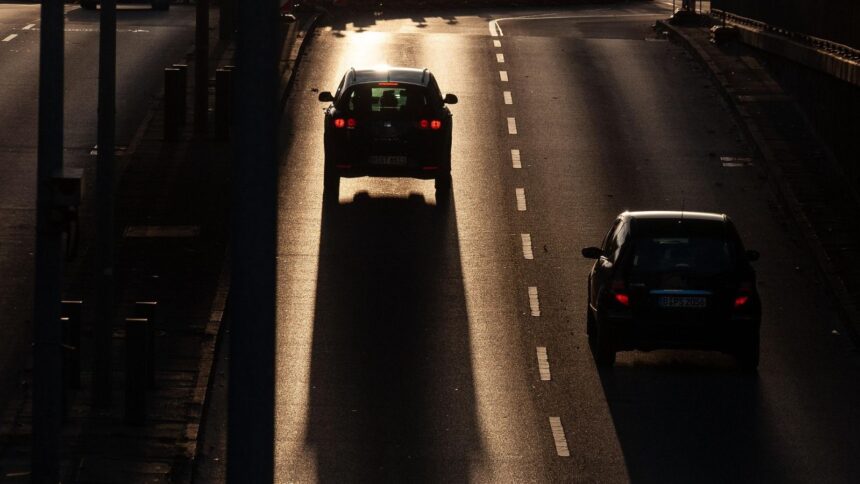Twenty-three national highways totalling 5,500 km could be upgraded to e-highways for electric vehicles by 2027, provided states submit eligible public-private partnership (PPP) proposals to the Centre, Abhijeet Sinha, programme director at National Highways for Electric Vehicles (NHEV), told The Indian Express.
In her speech this February, Union Finance Minister had urged states to identify a three-year pipeline of infrastructure projects in PPP mode and seek support from the India Infrastructure Project Development Fund (IIPDF). Making a case for the development of e-highways under this model, Sinha said: “The projects will be funded, land will be provided through the National Highways Authority of India (NHAI) for charging stations. What do states have to give? Just electricity and permissions, like for registering electric fleet operators. It’s a win-win situation for them. The only thing they have to do is respond to this national clarion call.”
Based on technical trials conducted by NHEV, a pilot programme under the government’s Ease of Doing Business initiative, e-highways will feature public charging stations every 50 km. These will target at least 30 per cent utilisation of charging points, and achieve a breakeven period of three years.
“We came in because it was important to have an agency that does prototyping, testing, proof of concept, and pilot runs for these technologies so that they become commercially viable. If we hadn’t done this, there would be more of what happened over the last 10 years of governments purchasing public chargers, which have utilisation of 3-5 per cent and the breakeven period is 45 years,” said Sinha, who is also president of the Charge Point Operators Society (CPOS).
According to him, India’s approach to developing EV infrastructure has been misdirected from the start, with greater emphasis placed on setting up charging stations within cities—where vehicle movement is less predictable—rather than on highways, where fleet-operated electric buses, cars, and trucks follow more consistent travel patterns.
“If we had worked in that direction, EVs would have been running on and that would have generated confidence within cities. People would’ve said EVs are running between and Jaipur, but why can’t they go from home to office in an EV,” he said.
NHEV has conducted extensive trial runs with multiple fleet operators across three routes—Delhi to Agra, Delhi to Jaipur, and to Tiruchirappalli—and gathered detailed data to give potential investors greater confidence in financing charging infrastructure.
A template for building EV charging stations
It has also developed charging station designs and projected potential earnings based on specific parameters, aiming to bring EV charging stations on par with petrol pumps in terms of investment clarity.
“For petrol pumps, standardised designs are readily available from multiple architects. But if you want to build a charging station tomorrow and start construction within a month, an architect might take six months just to finalise a design and get approvals from various ministries. Also, how much money do charging stations actually make? If people don’t know that, they won’t invest,” Sinha said.
NHEV has also identified key metrics that define an e-highway, which include at least 30 per cent utilisation of charging infrastructure.
“How did we increase utilisation? We focused on two basics—an origin city and a destination city. You need two cities between which people actually commute, because that’s what the calculation depends on. We analysed real-time running data, looked at how many buses and cars were available on apps—say, buses from Delhi to Jaipur—and how many travellers were booking. Then, we worked out how many buses and cars would be needed to keep utilisation at the desired levels,” he said.
“If your charger isn’t hitting 30 per cent utilisation, don’t commission it. You’ll run at a loss. If someone had thought about this earlier, you wouldn’t have been losing money for the last 10 years,” Sinha added.
AHEM model for electric highways in India
To finance India’s e-highways, NHEV has developed a model called Annuity Hybrid E-Mobility (AHEM), based on the Hybrid Annuity Model (HAM) used for PPP road projects, to ensure a breakeven period of 3 years.
Under this model, NHEV builds the charging stations with government support, and companies that supply chargers and EVs, like fleet operators, are paid a fixed amount in the first year to cover capital costs. After that, they earn variable payments depending on how much their fleets grow and how often the chargers are used.
After the first year, charging stations are then offered to PSUs on priority, followed by the private sector, including family offices and high-net-worth individuals (HNIs), while NHEV continues to operate them. The model spreads financial risk between PSUs, insurers, and banks, giving suppliers the confidence and liquidity to invest.
Addressing EV range anxiety
The development of e-highways with functional charging stations every 50 km will be pivotal in addressing a key concern with EVs—range anxiety.
“At a petrol pump, you are rarely refused petrol. In the current situation, there are such chargers for which there will be no electricity. As a fuel dispensing infrastructure, whatever the fuel may be, you can’t upset a user with just 10 per cent charge left on a highway. It could be a lady driver, the time might be night. You can’t create a volatile situation of this kind,” Sinha said.








